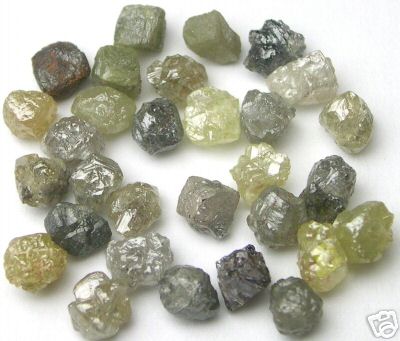Career coaches and search consultants spend inordinate amounts of time encouraging job seekers to dazzle and to stand out in the candidate crowd. However there is one area when it’s OK to be the diamond in the rough, unexciting and utilitarian, and when dull is completely OK if not advantageous. That is in the context of resume formatting.
I mention this in every workshop I do, but I am pretty sure as all the sophisticated CVs flood into my inbox, that most don’t take this seriously! Every job search tool box should include one CV in bog standard, Word format or PDF. In my whole, somewhat long career I have never heard anyone suggest that they are seeing a candidate exclusively because of a pretty looking or creatively designed resume.
Why? ATS software
Many large organisations retrieve candidates’ CVs from their data bases via A.T.S. (Applicant Tracking Systems) or H.R.I.S. (Human Resource Information Systems) which strip resumes of formatting when the information is imported into their own systems. The problem is that tech is updating all the time and different companies use different systems. The challenge is that oftentimes you may not know what to use.
Some ATS systems are sophisticated enough to complete this process without difficulty. They will tell you in advance the formats which are compatible with their software, which makes life simple. Others are not. Very often recruiters have to copy/paste information from a CV, into a client template to forward to the HR or hiring manager. I very often replicate contact details and if I have to retrieve those embedded in a header or PDF format, that only takes time. Others dealing with hundreds of CVs per day with a wide field of candidates, have the luxury of not needing to be vigilant.
Additionally, many companies have rigorous anti-virus software which are especially punitive of attachments. I had one client who failed to get any CVs I had sent in connection with a search for an International Tax Specialist position. We found out that their firewall blocked all mails and documents which included the letters “cialis” (a male drug).
Resumes don’t get you jobs – interviews do and what you need is the opportunity to shine in person.
PDF or not
At one time PDF format was not always advisable because it was quite often incompatible with some ATS systems which require additional software to convert back to Word, or to align with their own company templates. Many companies have this – but not all. Times have changed and when you upload a CV the system will let you know which models it will accept. Today, both Word and PDF are acceptable.
Candidates also use PDF because they fear that their CV will be modified. Honestly – no one has time and if it is tweaked it’s usually for their benefit.
Other bells and whistles which may also cause your CV to slither into the ether are: graphics (tables, charts) section divides, columns and even photos. However this is also changing frequently, and many systems are much more flexible than they used to be.
To complicate matters because 25% of all CVs are read on mobile devices, it’s good to check how yours looks on an iPhone or iPad. In these circumstances PDF format works best.
Think small
Importantly, most CVs are now read on a small screen, frequently a phone, tablet, or laptop, not even a full size desk top. It’s important that your CV, particularly the top half of Page 1 is very clear and where the punch is packed. Even then, the reader might be accessing it via a preview or cached version when complex formatting will not produce the best results.
If you do have a story to tell that requires a sexier look or illustrates a more creative side of your personality or career, fear not you still have a number of options.
- Include your LinkedIn url and use the slide share function in your profile or upload it into the media section
- Add a hyper link to your website
- Take a hard copy of your fancy CV with you to the interview
- Keep an updated copy of your CV on your phone. You never know when you will need it.
The most important goal is for your resume to be easily retrievable. This is when dull not dazzling works in your favour. Resumes don’t get you jobs – interviews do and what you need is the opportunity to shine in person.
If you need help creating a powerful CV – check out the personal coaching programmes







Hi Dorothy,
While I admire and respect your recruiting perspective, I must respectfully offer an alternative viewpoint: resumes need not be utilitarian and dull to be effective. In my 14 years’ resume development, I’ve learned that design matters and DOES garner the attention of decision makers.
With Word’s design capabilities, a visually stimulating layout complements the content; and, in fact, helps to guide the reader to key story points. Good design aids in glimpse-ability. The consistent feedback I receive from my professional and executive clients is how well received the resume was and that it was an investment toward landing the next position.
CEOs, VPs, Senior Managers and other hiring leaders are drawn to an illustrative story that shines a light on the nuances of the hows/whys a candidate does what s/he does and impactfully pulls the reader deeper into the mind of the potential hire. In that regard, a resume DOES help get the job (not just the interview). In fact, most clients I know say the resume worked alongside them during the interview process, aiding in story telling and stimulating further conversation.
As to ATS systems, converting one’s stylish Word resume into a plain text version easily solves that problem — my clients know that the plain text resume, stripped of the color, charts, graphs and other design enhancements is needed to fit into the ‘templated’ requirements of such systems. It is quite easy to maintain both a visually formatted and plain-jane (plain text/ASCII) resume and simply use whichever is fitting for the particular submission.
Fortunately, many of my clients are coached to network and direct their resume into individual email ‘hands’ vs. competing among 100s or 1,000s of other resumes bombarding the generic HR systems, so heavily worrying about the ATS systems is not a great concern. But again, the plain text resume fits the bill when needed.
Bottom line: there is no easy — or single — answer as to what will resonate with someone reviewing a candidate’s resume during the job search process. Recruiters often look for certain ideals in a resume based on how they must submit candidates to their client companies, while the hiring manager or board member may be open to and seeking something else when receiving a resume directly from a candidate.
From a professional resume writer’s perspective, I have witnessed that, over and over, a sales and marketing-focused approach (including a bit of resume communications dazzle) to articulating and displaying one’s value is essential to differentiate and to GET and move through interview conversations.
Where you and I intersect well is regarding the idea that the first half of the first page of the resume be clear and that that is where the punch is packed. As well, including LinkedIn and other social URLs on the resume is an important strategy. And finally, yes, a hard copy of one’s design-savvy resume can certainly be printed and carried to the interview as well!
Dorothy, thanks for your always strongly stated and passionate blog posts! With that, I was compelled to respond from the perspective of someone who writes resumes every day and who has a bit different opinion on dazzling vs. dull resumes!
Jacqui
Hi Jacqui – thanks for your detailed response. I’m not actually sure I disagree with you!
I think the key phrase in the post is this: “Every job search tool box should include one CV in bog standard, Word format“. In today’s job search market candidates should be encouraged to craft their job search to each specific opening, which will lead to a number of resumes in the portfolio. I am advocating one should be in Word.
The challenge for most is to know when to send out a simple version rather than a more sophisticated, complex one. If uploading online, especially to a large organisation where recruitment processes are more likely to be highly automated and technology driven, I would always strongly recommend keeping it simple.
This also has nothing to do with content – just the formatting. Having a strong CV is quite different to a ” pretty looking ” one. And a pretty looking CV is also not the same as one that contains powerful vocabulary and succinct success stories in a design which is easy to read and digest.
Clearly show casing skills in the best possible way is a vital part of the process, and leads to doors opening, but I have seen many candidates fall because their interview performance doesn’t match the expectation created by their resumes. It’s the interview which seals the deal – not the CV. (https://dorothydalton.com/2010/10/05/do-you-live-in-the-shadow-of-your-own-resume/)
Even when the resume is sent into a named contact person by email – it usually has to be stored and retrieved at some point. In fact the job seeker wants that if the addressee leaves or maybe for other opportunities within the organisation. So once again – depending on the organisation, simple can be good.
I’m not suggesting there is no place for complex CVs – just judicious and strategic use!
With all due respect, and understanding what you all are saying above, I fear that this all misses the larger point that CVs/Resumes are obsolete in and of themselves. So whether companies use slick software to filter them is beside the point. They are fooling themselves if they think a Resume is what they ought to be reviewing. Resumes are going multi-media digital. Recruiters and HR people (and software developers) had better get used to the idea. Resumes will end up as museum pieces.
Hi Frank – thanks for your comment. I don’t think I’m missing the point -I’m just not covering it in this particular post.
I agree eventually the use of trad resumes in any format will become increasingly infrequent in a business world. But today they are a key part of a job search strategy and the hiring process – required by all players (not just HR!) Rightly or wrongly I think they will be around for a few more years.
My comments apply to current processes and suggest having one resume in Word format in the arsenal. That portfolio should also include, of course, an online/digital presence. I’ve written extensively about this too!
Hi Frank,
Agree with Dorothy, that current processes are what are being addressed in this post.
As well, clearly the resume/CV is morphing and evolving; that is no secret. It really boils down to semantics in so many ways. Right now, and probably for a long time to come, the word, “resume” is the familiar go-to title for what’s considered the repository of one’s career value message.
I often refer to one’s career messaging portfolio; as well, social resumes and other social media digitized positioning stories are prevalent, but at the end of the day, the go-to request is for a ‘resume,’ which, if done well, integrates links to the social sites.
With the popularity and value of social media in most cutting-edge professional’s lives, the spokes of one’s career messages fan out well beyond the traditional Word document. That said, the ‘resume’ (or whatever one wants to call it) and the processes connected to unearthing a meaningful value story focused on one’s target audience, still is the hub that is at the center, fueling the social media message spokes. I wrote about that here: http://careertrend.net/resume-is-your-career-heartbeat.
Dorothy’s consistent, deep introspection on a variety of subjects related to career marketing, personal branding and resume-related topics is amazing. As well, I’ve strived consistently, for the past 14 years to write, train and consult/coach with clients to present the most poignant value message — using effective, focused content that sells their unique value, concisely, yet impactfully. That is the essence of a successful resume/CV story/digital presence.
Respectfully,
Jacqui
Jacqui – thanks for your meaningful post script and kind words. I’m in complete agreement. The job search landscape is changing and whether in trad CV form or digitally, job seekers need to present their success stories in the best possible light. Many do not know how to do that via any media. Which is why Jacqui’s role is so valuable!
This particular post only covered some basic but oft misunderstood mechanics!